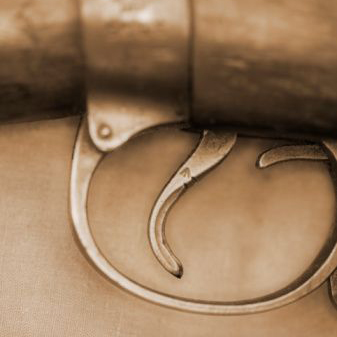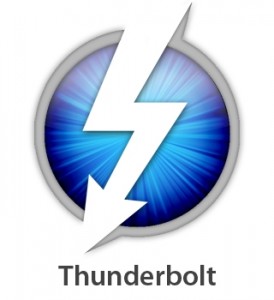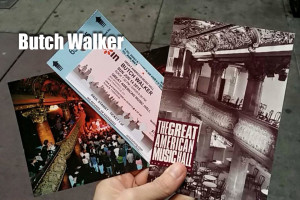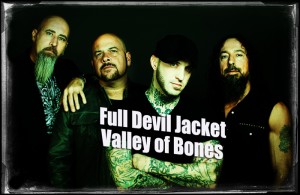So You Want To Buy A Gun… (Part 2 – Rifles)
7 min read
Disclaimer: I am not and do not claim to be a gunsmith. Take everything I say with a grain of salt. If you decide to purchase or even shoot a firearm, contact a retailer or a qualified gunsmith first. They know way more about this than I do, and can give you more, better information than I ever could. Also, I recommend going to a local gun shop/range and taking a firearms safety course if you have never taken one before. I cannot stress this enough.
 Rifles serve a distinctly different purpose than handguns. They are also a bit more complicated to explain and to get started in and there are far more rifle cartridges than handgun cartridges. This is because rifles tend to be more versatile than handguns. There are also more rifle actions than handgun actions. For the purpose of this introduction, I am going to stick with the most common and popular cartridges and actions. I will not be discussing black-powder rifles.
Rifles serve a distinctly different purpose than handguns. They are also a bit more complicated to explain and to get started in and there are far more rifle cartridges than handgun cartridges. This is because rifles tend to be more versatile than handguns. There are also more rifle actions than handgun actions. For the purpose of this introduction, I am going to stick with the most common and popular cartridges and actions. I will not be discussing black-powder rifles.
And as always, here are the 4 rules of gun safety. These are to be followed to the letter every time you are handling a weapon. You’re absolutely no good to us dead!
RULE I: ALL GUNS ARE ALWAYS LOADED
RULE II: NEVER LET THE MUZZLE (the barrel) POINT AT ANYTHING YOU ARE NOT WILLING TO DESTROY
RULE III: KEEP YOUR FINGER OFF THE TRIGGER UNTIL YOUR SIGHTS ARE ON THE TARGET
RULE IV: BE SURE OF YOUR TARGET
RIFLES
Actions
Break-open Single Shot
With this action, the barrel and action “break open” near the trigger, allowing the user to insert 1 round into the chamber. These actions are very simple, very easy to use, and there is very little chance for malfunction as there are essentially 2 moving parts – the trigger action and the joint where the barrel and action break open. While there are still many break-open single shot rifles, they have become less popular in recent years, unlike break-open shotguns which are still very popular. Most break-open rifles tend to be either very cheap, poorly made introduction models, or very high end collector’s items.
Example: Winchester single shot series (available in many different calibers)
Lever Action
Lever actions were developed in the 1860s and saw their first military service in the Civil War. They were a great leap forward over black powder and break open rifles because they allowed the rifle to hold multiple shots (about 10) and to fire them in rapid succession. The rounds are stored in a magazine tube underneath the barrel. They are called lever action because there is a lever that is worked by the operator to cycle between rounds.
Lever action rifles were often considered “cowboy rifles” because they could be chambered in the same round as their pistol; .45 Long Colt, .44 Magnum, .44-40 Winchester (not very popular now).
Lever action rifles were (and are) one of the most popular hunting rifles of the 20th century, in particular the model 1894 Winchester. Some reasons for their popularity is that they allow for a quick follow-up shot, can be accurately used without optics (sights), and that the 1894 in particular is chambered in a very successful cartridge – the .30-30 Winchester. Lever action rifles are often seen in western movies.
Example: Model 1894 Winchester
Bolt Action
The bolt-action rifle was another great leap forward in rifle actions. While bolt actions were developed in Europe in the early 1800s, it did not see combat until 1864. It is called bolt action because the firing pin is located in a bolt that is operated by hand. To operate it, the user grabs the handle, rotates the handle up, pulls the bolt back (ejecting the used case), pushes the bolt forward (inserting the new round into the chamber), and rotates the bolt back down. Even though it sounds more complicated, this system can be operated slightly quicker than the bolt action.
Yet another reason for its popularity is that it allowed the rounds to be stored in a magazine underneath the action, unlike the lever action where the rounds are stored in a tube underneath the barrel, thus making it more susceptible to damage.
The bolt action rifle would become the military standard in almost every armed conflict from after the Civil War until World War 2 (in WW2, the US was the only army using a semi-automatic service rifle – all the rest were bolt action). There are various different types of bolt actions, but they all operate essentially the same way.
Semi-automatic
Semi-automatic rifles were developed in the late 1800s, but did not come into wide use until the early to mid 1900s. Semi-automatic rifles work much the same way semi-automatic pistols do. The operator does not need to do anything between shots other than pull the trigger. This is NOT fully automatic – a fully automatic assault rifle can be fired by pulling the trigger once and holding it down. These are mostly illegal, but can be legally owned by civilians with a very expensive license and a tax stamp. Here is an excellent video describing the differences between the two here:
Example: M-1 Garand (this one shows a pistol, but the systems are pretty much the same)
Calibers
Rifle calibers are different than pistol calibers in that almost all rounds can work in almost all kinds or rifles, considering they are chambered for that round.
.22 Long Rifle – This is what you shoot when you’re at Boy/Girl Scout camp. It has almost no recoil, is very cheap and plentiful, has decent range for a small round, and can take small game/varmints (rabbits, squirrels, raccoons, etc). They are excellent for target shooting because it is incredibly cheap (about 15 dollars for a box of 500 rounds). If you watched the biathlon at the Olympics, the shooters are shooting .22 rifles. (example: Ruger 10/22)
.30-06 – .30 Caliber round introduced in 1906. Used by the US army from 1906 until the Korean War. Great range, great stopping power. Has been used to hunt every North American game animal. Common weight around 180 grains.
(Example: Springfield 1903)
.308 Winchester/7.62 NATO – (These two rounds are somewhat different, yet somewhat the same. If you are looking for a rifle chambered in one of these, find out which one it is designed for. .308 is the civilian version of a7.62 NATO military round. The 7.62 round is much “hotter” than the .308, and could possibly result in serious damage to the weapon and serious injury to the user.)
The .308 Winchester is the civilian version of the 7.62 NATO round. It came in use by NATO allied nations in the 50s to replace the .30-06 round. The round is a very powerful round known for great stopping power and good range. Many rounds are between 140 and 160 grains in weight. Still used by the US military and NATO countries, but usually only in machine guns and sniper rifles. Also commonly used in hunting rifles.
(Example: M-14)
.223 Remington/5.56 NATO – (These two rounds are somewhat different, yet somewhat the same. If you are looking for a rifle chambered in one of these, find out which one it is designed for. .223 is the civilian version of a 5.56 NATO military round. The 5.56 round is much “hotter” than the .223, and could possibly result in serious damage to the weapon and serious injury to the user.)
The .223 Remington is the civilian version of the 5.56 NATO round. It came in to use by NATO allied nations in the 60s and saw its first American combat use in Vietnam. This round follows the high velocity school of thought as many of the rounds do not exceed 60 grains. Very popular target and plinking round, is not recommended for hunting anything larger than a coyote. You may think, as I do, that if it is not recommended for hunting deer, how can it be used by the military. The reasoning behind its military use is that it is a physically light round, which allows soldiers to carry more magazines. Also, it has little recoil, allowing for a quick follow up shot, as well as a longer range than many competing rounds.
(Example: M16/AR15)
7.62×39 – Developed in Russia in 1945 and first used in the SKS, this is the round used by the Ak-47. Lacks the range of the .223/5.56, but what it lacks in range it makes up with greater stopping power. Many modern hunting rifle manufacturers make bolt action rifles that fire this round as it is an effective deer round, and it is also cheap and easy to find.
(Example: Ak-47)
.30-30 – First developed 1895, is a lever action only round. Common weight is around 150 grains, and has probably taken more deer in North America than any other round.
(Example: Winchester Model 1894)
.243 Winchester – Common deer hunting round, light recoil, high velocity.
(Example: Remington 700)
These, in my opinion, are the most common and versatile rifle rounds. Again, there are far more rifle calibers than pistols, so if you go into a gun shop you will probably see lots of rifles chambered in rounds not mentioned here. The gun shop employees are more than capable in telling you about these. In my opinion, the most versatile round for hunting and long range target shooting is either a .30-06 or a .308. If you just want to shoot paper, you can’t beat a .22
Manufacturers
Just as there are more rifle calibers, there are more rifle manufacturers. Here I will list some of the more common ones. These are all mid to high quality.






